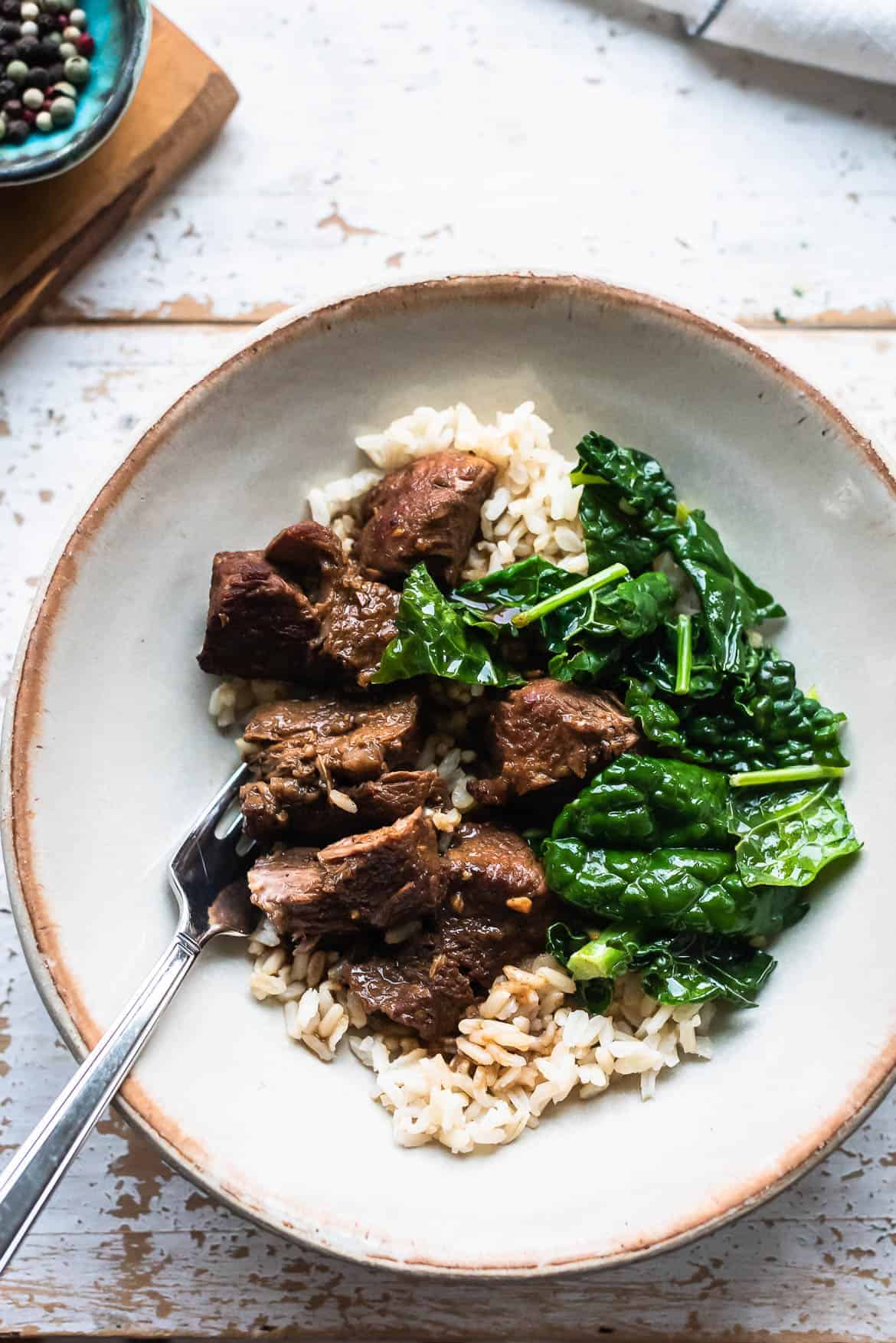Master the Art of Traditional Filipino Food Recipes.
Wiki Article
Discover the Rich Taste of Filipino Cuisine With These Must-Try Recipes
Filipino cuisine uses an impressive tapestry of flavors that show the country's rich social heritage. Each meal narrates, from the savory deepness of Adobo to the revitalizing tang of Sinigang, welcoming culinary enthusiasts to discover a diverse selection of preferences. The cheery attraction of Lechon and the soothing heat of Kare-Kare even more improve this gastronomic journey, while the vivid Halo-Halo offers a pleasant conclusion to any kind of meal. As we consider the subtleties of these iconic recipes, one have to ponder how they not only satisfy the taste yet also attach us to a wider cultural narrative.Adobo: The Iconic Dish
Adobo has actually emerged as the perfect dish of Filipino cuisine, exciting tastes buds both in your area and abroad. This cherished dish is identified by its one-of-a-kind combination of tasty, sour, and slightly wonderful tastes, attained via a careful marination procedure. Traditionally, adobo is prepared utilizing poultry or pork, although variations exist that include seafood and veggies.The basic components of adobo include soy sauce, vinegar, garlic, bay leaves, and black pepper, which together produce a rich and fragrant sauce. The food preparation method typically includes simmering the meat in the sauce, allowing it to soak up the complex tastes while ending up being tender. This process not just improves the taste but likewise works as a natural chemical, making adobo an excellent recipe for storage space.
Adobo is frequently offered with steamed rice, which enhances its durable flavor account. Each region in the Philippines boasts its very own variation, mirroring regional active ingredients and culinary practices. This adaptability speaks with the recipe's social importance and sustaining appeal. Whether enjoyed in your home or in restaurants, adobo continues to be a staple that personifies the significance of Filipino friendliness, making it a must-try for anyone discovering this lively cuisine.

Sinigang: A Tangy Pleasure
An additional keystone of Filipino cuisine is sinigang, a dish celebrated for its distinctive tasty taste. This tasty soup is commonly made with a variety of meats, including pork, beef, shrimp, or fish, and is characterized by its sour brew, which commonly originates from tamarind, environment-friendly mango, or calamansi. The equilibrium of level of acidity and umami creates a revitalizing comparison that is both reassuring and invigorating.Sinigang is typically enriched with a variety of fresh veggies such as radish, eggplant, water spinach, and string beans, adding not only to the dish's taste account yet additionally to its nutritional worth - Filipino food recipes. Each household might have its own variation, with regional variants that mirror neighborhood components and cultural influences
The prep work of sinigang includes simmering the picked meat up until tender, followed by the addition of the souring agent and vegetables. This approach permits the flavors to combine wonderfully, causing a passionate and rewarding dish. Generally offered with steamed rice, sinigang personifies the essence of Filipino friendliness and is a beloved staple, often enjoyed during family members celebrations and special occasions.
Lechon: The Cheery Roast
Lechon, usually regarded as the centerpiece of joyful Filipino celebrations, is a delicious roasted pig known for its crunchy skin and tender, delicious meat. This legendary meal is deeply rooted in Filipino culture, typically beautifying tables throughout birthday celebrations, wedding events, and considerable holidays. The prep work of lechon is an art kind, requiring thorough attention to detail, from marinating the pig with a blend of seasonings to making sure an also roast over an open flame or in a specialized oven.Typically, the pig is experienced with a mixture of salt, pepper, and neighborhood natural herbs, giving a rich flavor that complements its natural juiciness. The cooking procedure can take numerous hours, during which the skin transforms right into a completely crunchy layer, developing a fascinating contrast to the succulent meat beneath.
Lechon is commonly served with a side of liver sauce or vinegar dip, improving its full-flavored profile. It is not just a meal however a communal experience, as families and pals gather around to enjoy this sumptuous dish. The aroma of lechon floating through the air is an invite to delight, making it a precious symbol of party in Filipino culture.
Kare-Kare: Oxtail Stew
Kare-Kare, an abundant and hearty oxtail stew, holds a special location in Filipino culinary tradition, celebrated for its one-of-a-kind taste profile and lively presentation (Filipino food recipes). This recipe is characterized by its lush peanut sauce, which is produced by grinding baked peanuts or making use of peanut butter, providing it a creamy and nutty essence. Commonly, kare-kare attributes tender oxtail, although variations his comment is here may include tripe or beef shank, each contributing to the stew's deepness of flavorThe prep work of kare-kare usually entails slow-cooking the meat till it comes to be exceptionally tender. The addition of a variety of veggies, such as eggplant, string beans, and banana hearts, not only boosts the stew's dietary worth but likewise its aesthetic appeal. Served with a side of bagoong, or fermented shrimp paste, kare-kare perfectly balances its abundant, mouthwatering notes with a salty kick.
Commonly appreciated throughout unique celebrations and family gatherings, kare-kare symbolizes the essence of communal eating in Filipino society. Its delightful intricacy and comforting heat make it a recipe that is not just satisfying to the taste buds however additionally stimulates a feeling of fond memories for several Filipinos worldwide.
:max_bytes(150000):strip_icc()/265040-Filipino-Beef-Giniling-Pamela-Leyva-1x1-1-6f5eefd058da41bdb609059b253ea76d.jpg)
Halo-Halo: A Sugary Food Reward
Halo-halo is often view publisher site considered the ultimate Filipino dessert, celebrated for its lively mix of structures and tastes - Filipino food recipes. This delightful concoction is an excellent depiction of the Philippines' rich culinary heritage, integrating various ingredients that integrate to create a refreshing and indulgent treat, especially throughout heatAt its core, halo-halo features crushed ice topped with a range of components, including sweetened beans, jellies, fruits like bananas and jackfruit, and luscious leche flan. A generous scoop of ube (purple yam) gelato crowns the blend, adding an abundant, velvety flavor that raises the dessert. The layering of active ingredients not only produces a feast for the eyes but also supplies a complex interplay of sweetness and appearance in every dose.
Commonly offered in a glass, halo-halo encourages diners to blend the materials prior to enjoying. This common facet improves the dessert's charm, as everyone's variation can be distinctly tailored. Whether delighted in as a road food extravagance or a special celebration treat, halo-halo continues to be a precious symbol of Filipino culture, welcoming everyone to explore its delightful and diverse flavors.
Conclusion

Report this wiki page